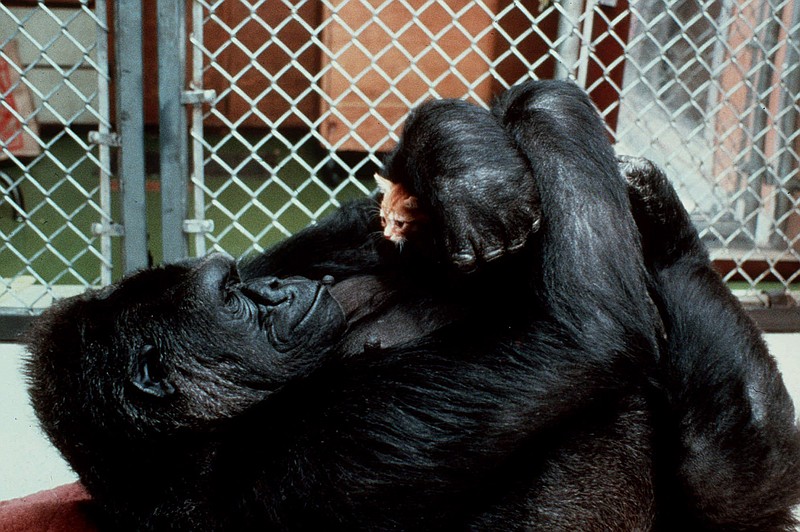Koko, the gorilla famous for having learned American Sign Language, has died. Born in the San Francisco Zoo in 1971 and moved to the newly founded Gorilla Foundation a few years later, she spent nearly a half-century subjected to the whims and wishes of humans. She knew that she wasn't where she was meant to be. She often signed the word "baby," carried gorilla dolls in her arms and gently caressed her companion kittens. In the wild, she likely would have given birth to several babies, nurturing and protecting them and teaching them how to be part of an extended family. Her intelligence and sensitivity taught humans a lesson about otherness.
King Kong is fiction: Gorillas are quiet, peaceful and nonaggressive. They enjoy highly social multifaceted relationships, and their lives revolve around their families. They grieve and have been documented holding wakes for lost loved ones. In captivity, everything that they're meant to be and do is lost. It's little wonder that some zoos have resorted to giving them antidepressants.
Of course, Koko is only one of many animals who have desperately tried to get humans to understand what they want and need. There was chimpanzee Washoe, who signed to researchers "You me go out hurry." And bonobo Kanzi, who, when asked by his caretakers if he was ready to do something, was known to reply, "Past ready."
Animals need not be taught ASL - they have their own languages.
Dolphins not only communicate in complete sentences but, unlike your interrupting uncle, they patiently wait until another completes a thought before joining the conversation. Elephants issue warnings and share information across the miles using very low-frequency "infrasounds" with pitches below the range of human hearing.
Birds known as Japanese great tits use not only different calls but also syntax - a set of rules and grammar that gives specific structure to what they're saying. Some calls mean, "Danger!" while others signal, "Come here. I found food."
But furred and feathered animals aren't the only ones who share news and gossip. Researchers at the National Centre of Scientific Research in Rennes, France, found that cockroaches "talk to each other" using chemical cues to pass on information about locations and types of food or about which crack or shelter might make a good home for the day.
And then there's the bored beluga whale in a San Diego facility who so convincingly mimicked human speech by ordering a diver to "get out" of his tank that the diver thought his colleagues were playing a joke on him.
Animals in our own lives "speak" all the time. Dogs whimper for a moment of their human's attention or because it's been too long since someone thought to let them out to do their business. Anyone who has lived with a cat knows the difference between a meow that says, "Get up - I want breakfast!" and an excited yowl meaning that a squirrel has been sighted.
Language doesn't consist of just vowels and consonants. Body language alone speaks volumes. Yet when animals use their tails, ears, eyes and voices, we often don't even try to interpret or acknowledge their bona fide communication. Animals' language is no less real than our own. It's time we listened.
Jennifer O'Connor is a senior writer with the PETA Foundation, 501 Front St., Norfolk, VA 23510; www.PETA.org.
